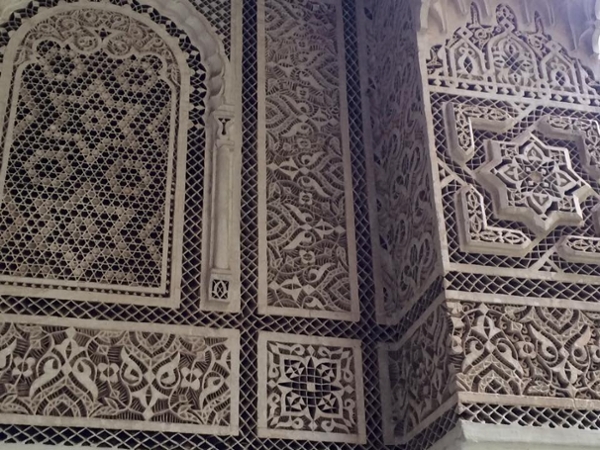Marrakesh
This past week, I spent more time drafting letters for grant funding and awards. We applied for a grant from the Taiwan Foundation by nominating our CEO for the Asia Democracy and Human Rights Award. I also took my “long weekend” for the summer to visit Morocco.

I’ve never been to Morocco, but I’ve been interested in traveling there since I was in high school and learned about the history, art, and architecture in the region. I was quite happy when I learned that Easy Jet flys to Marrakesh. The temperatures were quite hot, especially considering it was Ramadan (I refrained from drinking any water while I was walking around in public- or at least ducked behind a bush to do so). Morocco is a Francophonie country, but I was able to get by with my Arabic and, sometimes, Spanish. My most exciting purchase in Marrakesh was a small primer for children who speak Arabic to teach them French. I find I’m unable to pronounce French words by reading them, but I can pronounce them with the Arabic transliteration. For example, the French word for “six” is “six” and I would be inclined to read it just as I would in English. But my Arabic primer lists the transliteration سيس, so I know to pronounce it more like “seece.” I had just checked on French lessons before flying to Marrakesh and learned they are 100 chf per lesson (over $100 U.S.) so this book is quite a find! (Most people I have encountered in Geneva do not speak English, so it can be necessary to use French for daily tasks.)
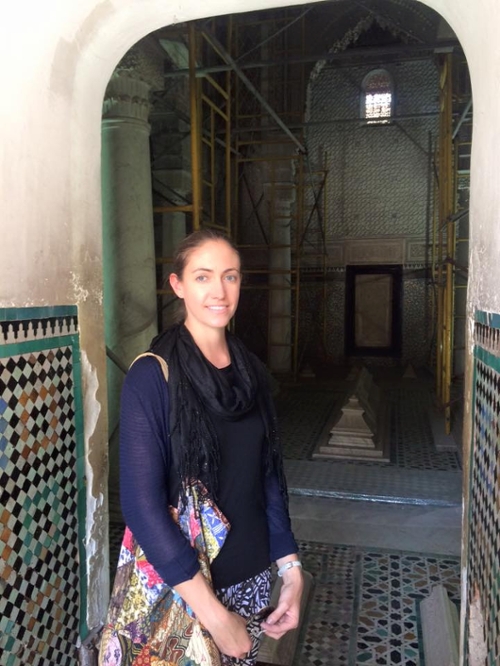
I was able to spend a lot of time in the souks (markets); walking around at night with the food stalls, dancers, etc.; to tour the Badi and Bahia Palaces and the Saadi tombs; and I took a one day trip to the seaside in Essaouira. The city of Essaouria is still enclosed by fortress walls and remnants of a large fort built during Portuguese occupation in the 16th century. There were a lot of people kitesurfing and windsurfing in Essaouria, and, while it is still an Islamic city, you can tell it is very laid back, and many of the residents are focused on artistic pursuits. On the way, we stopped at the all-female cooperative which produces Argan Oil products.
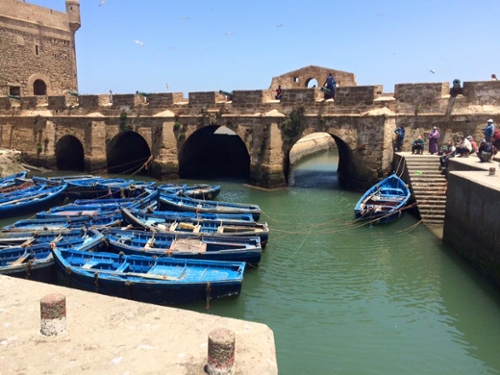
The Badi palace, which was extremely well fortified, now also contains a small modern art exhibit. There were several paintings, photographs, and also two videos, one of which highlighted the difficulties faced by immigrants from other regions in Africa. Throughout Marrakesh, there are many examples of ornate wood carving on walls, doors, and all sorts of surfaces. The Badi Palace still houses a 12th century minbar which provides some example of the early, ornate wood carvings.
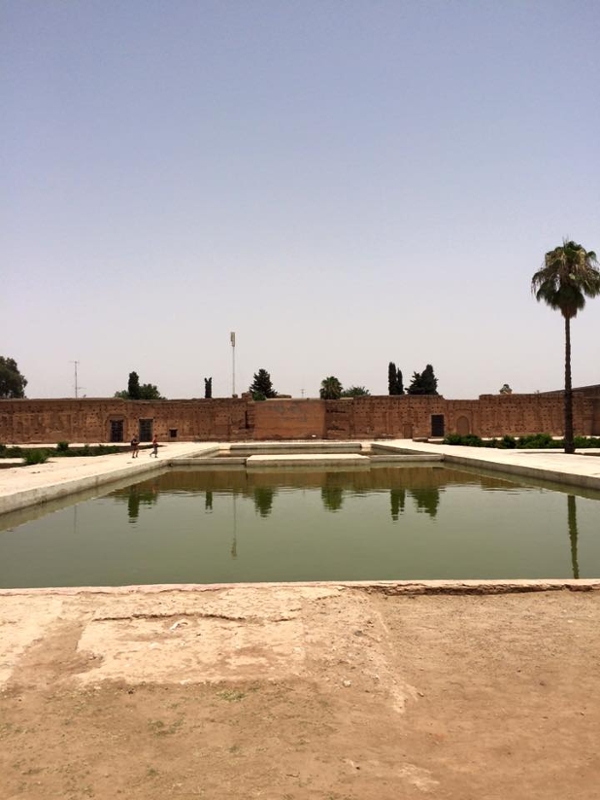
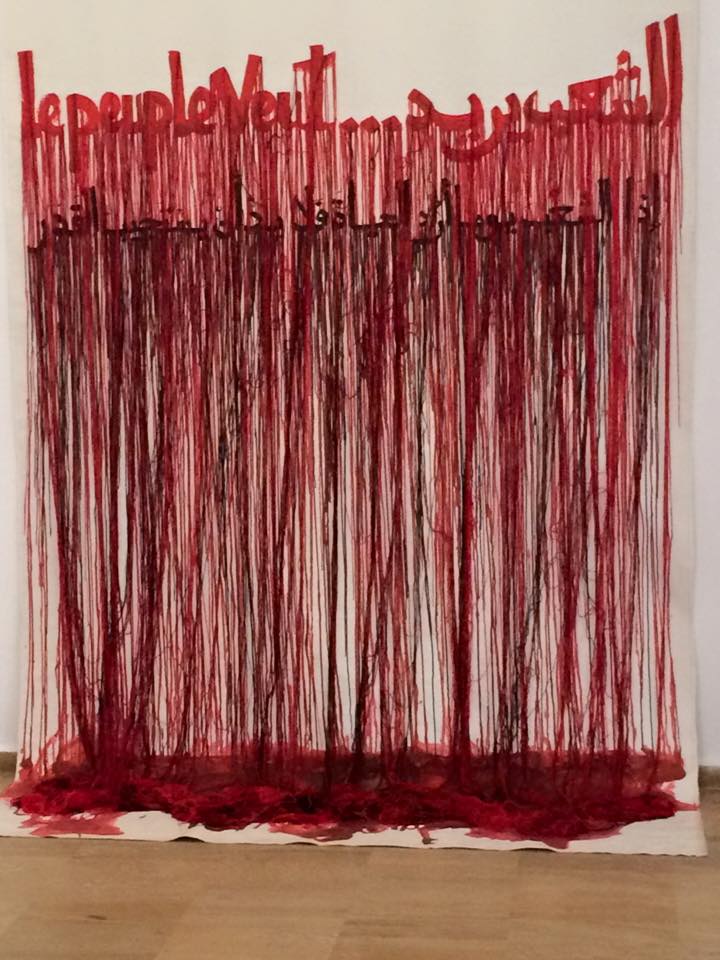
(The image above is Le peuple Veut por Jamila Lamrani- based on the poem by the same name)
The Bahia palace was built only in the late 19th century, but it was intended to exemplify Moroccan Islamic architectural and art styles. It is defined by beautiful tile work, ceiling paintings, etc. The influence of tourism is extremely strong in Marrakesh, but the majority of residents are still fully observant of the pillars of Islam, wear traditional djellaba, and otherwise retain their personal values. After getting a little lost on my first morning, I became friends with a young man from the Sahara who is working in Marrakesh while he attends Uni to study Psychology. Uni is free for all residents in Morocco, but Rachid feels this has a drawback in that the quality of the classroom instruction is not always very good, and there is certainly no guarantee of a good job upon completing a degree program. Rachid and I will stay in touch, and he has invited me to come trekking in the Sahara with him and his friends during my next trip to Morocco.
